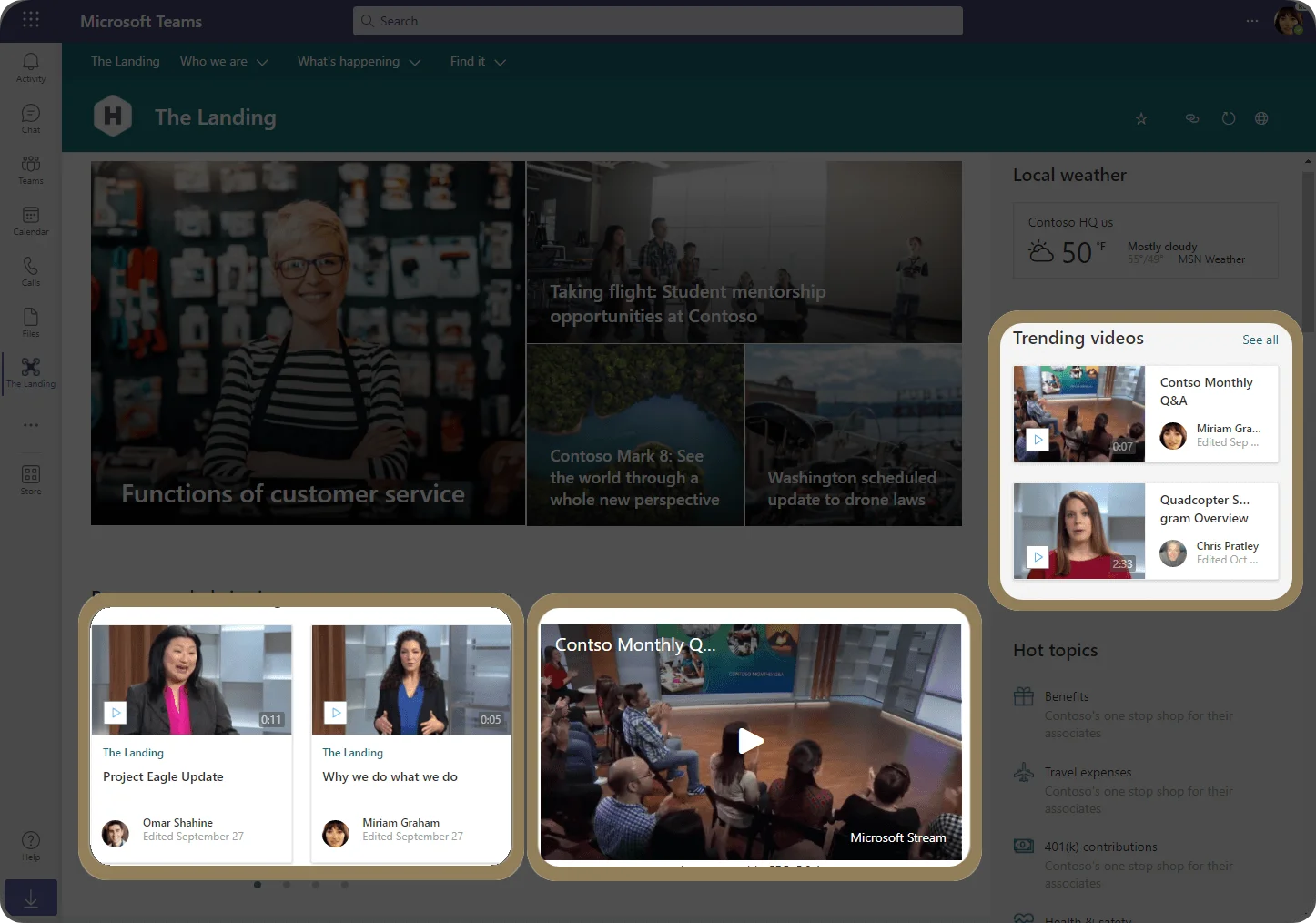

The world has changed around us. The COVID-19 outbreak was a black swan event that made us all reimagine the way we work. Companies and HR managers scrambled to shift their operations to digital platforms and remote employee engagement activities became one of the most important aspects of managing teams. The dilemma? Keeping employees engaged and motivated while working remotely.

According to a 2022 study by Gallup, 65% of employees in the U.S. are not engaged at work. Many of them are looking for a reason to be inspired. This posits a couple of questions directly to you. Do you have what it takes to inspire? Can you effectively drive employee engagement activities during COVID and beyond?
At Teyuto, we understand the importance of keeping employees engaged and motivated in this time of uncertainty. So, we have come up with some virtual employee engagement ideas to keep your staff engaged and connected in this era of hybrid work culture.
Revitalizing Virtual Employee Engagement in the Post-Pandemic Era: A Business Imperative
In the post-pandemic world, employee engagement activities are imperative. They have to be aligned such that they become the lifeblood of motivation, productivity, and engagement of employees.
Employees may feel isolated and disconnected from their colleagues, especially during remote work. If so, it can lead directly to a lack of cohesion and a decline in their morale.

But, how exactly does employee engagement impact the business? Stats are what matter for any high-performing business. So, let's talk numbers.
The Impact of Employee Engagement
- A study found that high levels of employee engagement correlate with a significant decrease in absenteeism (81%) and an increase in sales productivity (18%) within business units.
- High-turnover organizations (with an annualized turnover rate greater than 40%) experienced an 18% reduction-,18%25,organizations,-43%25) in employee turnover, while low-turnover organizations (with an annualized turnover rate of 40% or lower) experienced a 43% reduction.
Business Benefits of Employee Engagement
- Business units with high employee engagement exhibit a 10% increase in customer ratings and an 18% increase in sales.
- The combined effects of improved attendance, productivity, customer satisfaction, and adherence to processes, standards, and systems result in a 23% augmentation of profitability for highly engaged business units.
Employee Satisfaction and Productivity
- Satisfied employees demonstrate 40% greater productivity than their dissatisfied counterparts.
- Engaged employees exhibit 44% greater effectiveness compared to merely "happy employees."
- Research demonstrates that engaged employees outperform others by 202%.
Retention Challenges
- A study of more than 600 US businesses with 50-500 employees found that 63.3% of companies are struggling to retain employees, more so than hiring them.
- The cost of hiring new talent on average is $4,129, and onboarding new hires costs around $986.
- Deloitte's study estimates the cost of employee turnover ranges from tens of thousands of dollars to up to two times the employee's annual salary.
Leadership and Trust
- 78% of employees are more likely to work for companies that have a sense of purpose.
- A recent Interact/Harris Poll shows that 91% of surveyed employees believe that their leaders lack communication skills.
- The Edelman Trust Barometer reveals that almost one-fourth of employees do not trust their employers.
- 85% of employees report feeling most motivated when management provides regular updates on company news.
Remote Work Adoption
- A survey by Egotron also revealed that a majority of workers, 75%, feel better when working from home.
- A survey conducted in the UK during the pandemic found that 73% of respondents believed they were more efficient when working from home.
- The most commonly cited advantages of working from home include the lack of a commute (47% of respondents) and a more flexible schedule (43%).
Working Remotely: Emotional and Social Wellbeing
- According to Harvard Business Review, remote working has resulted in 75% of employees feeling more socially isolated, 57% experiencing increased anxiety, and 53% feeling more emotionally exhausted.
- Forbes also found that 20% of remote employees report lacking a sense of belonging and feeling lonely.
This highlights the importance of addressing the emotional and social needs of remote employees.
What are the advantages of remote employee engagement activities?

Advantages of remote employee engagement activities include:
- Elevation of employee morale and motivation
- Increased productivity and efficiency
- Facilitation of team collaboration and communication
- Improved connectivity and commitment to the organization
- Augmentation of connectivity and commitment
- Fostering a sense of belonging and community among remote employees.
Strategies for creating innovative remote employee engagement activities include:
1. Achievable goals
Set achievable goals, which provide a clear direction for employees and foster a sense of accomplishment.
2. Team-building activities
Utilize technology for virtual team-building activities, which can include virtual meetings, online team games, and quizzes.

3. Foster creative problem solving
Promote collaboration and creative problem-solving, which will not only improve productivity but also enhance employee engagement and satisfaction.
4. Health and wellness
Encourage wellness activities, such as online fitness classes, online yoga sessions, and online nutrition classes, which can help to reduce stress and anxiety among remote employees.
5. Recognition
Celebrate success and recognize contributions to foster a sense of belonging and community among remote employees.
6. Prompt feedback
Provision of timely feedback and recognition. It will help in motivating and retaining remote employees.
7. Socialize digitally
Virtualize meaningful connections through video conferencing and virtual social events. You'll see a marked improvement in fostering a sense of belonging and community among remote employees.

8. Offer learning and development
Provide employees with learning and development opportunities, such as online courses, webinars, and seminars, which can help to develop their skills and foster professional growth.
Remotely Awesome: Examples of Remote Employee Engagement Activities During COVID
In the face of the COVID-19 pandemic, it's crucial to keep employees engaged, motivated, and connected to the organization.
Here are 25 innovative strategies for remote employee engagement that can help to foster a sense of community and belonging among your remote workforce:
1. Virtual Meet and Greet
Starting a new job can be overwhelming, but a warm welcome can make all the difference. Introduce new employees to their colleagues with a personalized video that showcases their background, interests, and unique talents. Imagine being able to put a face to the name of that colleague you've been emailing with for weeks, it can make all the difference.

2. Virtual Happy Hour
Remote work doesn't mean missing out on the office social scene. Host virtual happy hours where employees can unwind, connect, and bond over a drink and a laugh. Try fun themes like "Tequila Tuesday" or "Wine Down Wednesday" for a playful twist. Remember that time when you shared a laugh over a beer with your colleagues? It's those moments that make work, well, not feel like work.

3. Learning and Laughter
A study by Gallup shows that connected teams are 21% more productive. Organize "Lunch and Learn" sessions where employees can learn something new, while also having fun with their colleagues. Host trivia sessions, workshops, or other engaging activities that foster connection and camaraderie.

Who says learning can't be fun? Imagine the satisfaction of solving a riddle with your colleagues, or the thrill of winning a game with your team. And how about a virtual cooking class where everyone can share their recipes and cooking tips while enjoying a meal together?
4. Virtual Exploration
Give employees a chance to get to know their colleagues and the company in a more personal and interactive way. Organize virtual tours of different departments, offices or even team members' homes (if your employees want to, obviously.) Not only will it give them an idea of how the company functions, but it will also give them a glimpse into their colleagues' personalities and interests.

5. Bring Your Remote Team Together with Intranet Videos
Your company culture is more than just a set of values, it's the glue that holds your team together. Even when working remotely, it's important for your employees to feel connected to the company and each other.

Intranet videos are the perfect way to bridge the distance and foster a strong sense of community among your remote team. From virtual team-building activities to employee spotlights, these videos can showcase the people, projects, and culture that make your company unique.
6. Virtual Celebrations
Remote work doesn't mean missing out on celebrations. Host virtual parties, events, and celebrations to mark milestones and accomplishments. Use Instagram or TikTok filters to add a playful touch.

Create a virtual birthday party for your team member, or celebrate a team's achievement by hosting a virtual team lunch. Make it more personal by including team member's favorite foods or games. Also, try coming up with creative themes or props to spice everything up!
7. Virtual Q&A
Even while working digitally, don't you want to know more about your colleagues' thoughts and ideas? Yes, you do, and so do their other counterparts. So, host video Q&A sessions where employees can ask and answer questions from their colleagues. Use live streaming or pre-recorded videos to make your Q&As more effective.

8. Virtual Learning
Incorporate videos into your learning and development initiatives to foster professional growth and development. Offer video-based training sessions, webinars, or other opportunities for employees to learn and grow in their roles. Use in-video questions and conditional access (such as 90% score or 100% watch time) to drive effective learning.

9. Virtual Book Club
Make the most out of the bookworms in your organization. Organize a virtual book club where employees can read and discuss a chosen book together. This can foster connections and discussions among employees with similar interests. It might even give you ideas about people’s interests so that you can deploy them to projects that they’re excited about.

Tip: Issue “Push Notifications” or “eMails” in-advance to ensure maximum participation.
10. Virtual Escape Room Challenge
Create a virtual escape room challenge where employees can work together to solve puzzles and escape the virtual room. It’s a good team-building exercise. Incorporate elements of gamification to make it more engaging and competitive. Don’t forget to theme it around your company's values, history, or goals, thereby giving your employees a sense of purpose and being more relatable.
Tip: You can use Teyuto’s in-video quizzes and even theme your video player including its colors, style, and watermarks.
11. Virtual Game Night
Host virtual game nights where employees can play games together and have fun with their colleagues. This can include board games, video games, or other fun activities. Encourage team members to suggest their favorite games, and make it a regular event.

12. Virtual Volunteerism
A study by Deloitte reports that 78% of employees whose companies encourage them to be innovative and creative are more loyal to their organization. Encourage virtual volunteerism to foster a sense of purpose and community among your remote team.

Organize virtual volunteer opportunities like tutoring children online or virtual fundraising for a charity. This will not only make a difference in the community but also bring the team together for a common cause.
13. Virtual Team Building
A study by Forbes shows that effective teamwork is essential for remote work success. Organize virtual team-building activities like virtual scavenger hunts, virtual cooking classes, or virtual escape rooms to foster collaboration and connection among your remote team.

Take it a step further by creating a virtual team-building event that simulates a real-world experience. For example, you could organize a virtual team-building event that simulates a day of rafting on a river, where team members have to work together to navigate the virtual river and avoid obstacles.
14. Virtual Recognition
Recognizing and rewarding employees for their hard work and contributions is crucial for maintaining motivation and engagement. Host virtual award ceremonies, shoutouts, or even surprise virtual bonuses to acknowledge and celebrate your team's achievements.
The more personal the recognition, the better. It’s good to share anecdotes or stories of an employee's feat, and how it made an impact on the team or the company.
What about a virtual “Employee of the Month” award, where employees are recognized for their achievements, contributions and hard work? You can top it up with “Virtual Badges”, “Certificates”, or “Trophies” to acknowledge their achievements! While the rewarded employee will feel appreciated, others will be motivated to work harder as well. Food for thought!
15. Virtual Wellness
With remote work, it's easy to fall into a sedentary lifestyle. To combat this, organize a virtual fitness challenge to encourage employees to stay active and healthy. Create teams, set goals, and track progress.

Do what it takes to make your wellness program a success! You can also experiment with friendly competitions and goodies or gift cards for the winning team.
16. Virtual Mentorship
A study by Harvard Business Review shows that mentorship can improve employee engagement, retention, and career development. Pair experienced employees with newer or less experienced employees for virtual mentorship sessions. This not only helps the mentees but also helps the mentors to develop their leadership skills. And who wouldn't want to take advantage of such an opportunity?
17. Virtual Community Service
A study by Deloitte shows that volunteerism can improve employee engagement, retention, and loyalty. Encourage virtual community services, such as virtual fundraising events or virtual volunteer opportunities to foster a sense of purpose and community among your remote team. It's not just good for the community but also good for the employee's well-being.
18. Virtual Icebreakers
Starting a virtual meeting or call can be awkward, especially for new or shy employees. Incorporate virtual icebreakers, such as virtual "two truths and a lie" or virtual "show and tell" to encourage employees to get to know each other better and break the ice.

19. Virtual Employee Appreciation Day
Your employees deserve a day or two to feel valued and appreciated, don’t they? Better yet, you can make it happen every week. So, say goodbye to the loathed “Monday Mood”. Replace it with “Motivation Monday” to kickstart the work week. How's that for a remote employee engagement idea?
You can also organize virtual employee appreciation days, such as "Thank You Thursdays" or " Appreciation Fridays", to show your employees that you care.
20. Virtual Networking
Networking has become even more important with the increased adoption of remote work. Encourage virtual networking by organizing events such as “virtual career fairs” or “virtual meetups.” Such initiatives can also help you lure in talent by giving prospective candidates a gateway into your company by meeting people they’d actually be working with.
21. Virtual Game Challenges
A study shows that gamification can improve employee engagement and motivation. Create virtual games to encourage employees to work together and have some fun.

22. Virtual Movie Nights
Spending time together as a team, even if it's virtual, can foster a sense of connection and camaraderie among employees. Host virtual movie nights where employees can watch a movie together and chat about it afterward.

Use streaming solutions like Teyuto to facilitate the virtual movie night and add a sense of real-time interaction among employees with live chats, polls, and more! Your employees can even screencast the videos to their TVs if they want to.
23. Virtual Employee Suggestion Box
No matter what you do, there would always be n number of things you may just not be thinking about!
The point is that employee engagement is not just about organizing activities but also about listening to employees' suggestions and feedback.
Create a virtual employee suggestion box where employees can submit their suggestions and feedback anonymously. Implementing employees' suggestions not only improves employee engagement but also improves the overall work environment.
24. Virtual Talent Show
Everyone has talent, and what better way to showcase them than a virtual talent show? Organize a virtual talent show where employees can showcase their unique talents and skills.

This can be a fun way to encourage employee engagement and build a sense of community among remote employees. Don't you want to know what hidden talents your colleagues have?
25. Group Challenge
Create group challenges where employees can compete against each other to complete tasks or goals. This could be a fun-learning activity or even something directly related to business outcomes. Incorporate elements of gamification and have leaderboards to make the group challenges more engaging and fun.
So, there you have it! 25 amazing ways to engage your employees during COVID and beyond. Which employee engagement activity was your favorite?
If you’re looking for a good corporate video solution with seamless cross-device delivery and impeccable branding, feel free to contact Teyuto today. Feel free to drop any question that you have.
Stay amazing, stay safe, and keep thriving!


Enjoyed this read?